Exploring the Depths of Howl's Moving Castle
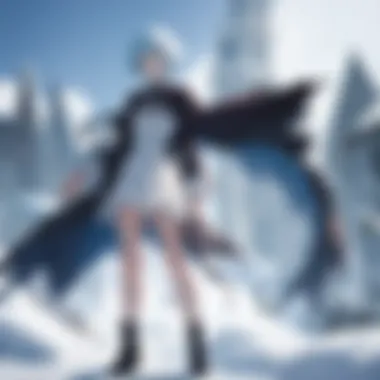
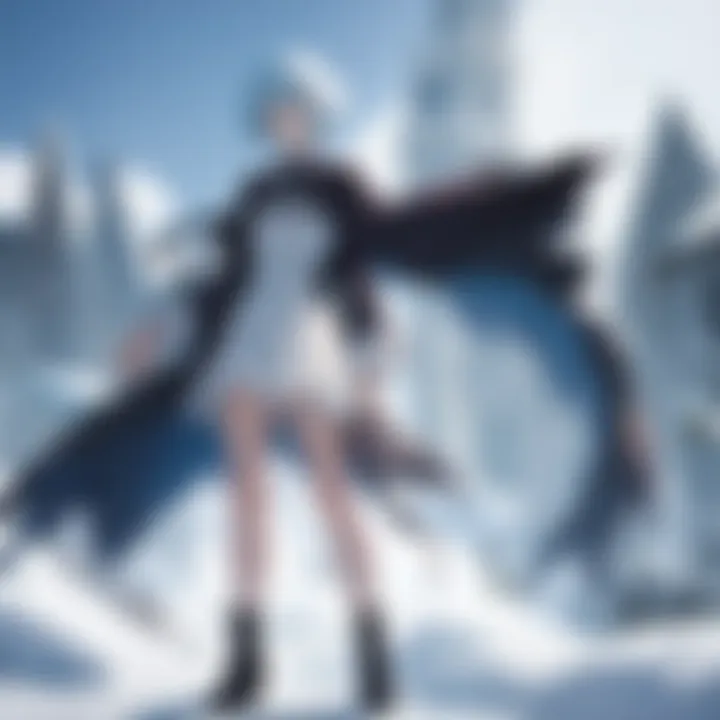
Intro
Howl's Moving Castle is not just an animated film; it is a symphony of themes intertwining love, war, transformation, and a quest for identity. The film stands as a testament to the capabilities of animated storytelling, offering a rich tapestry that resonates even years after its release. By analyzing the intricacies of character development and the story's underlying philosophies, we come to appreciate its cultural impact and relevance in today’s world. This exploration aims to illuminate the various facets of this cinematic gem, peeling back the layers to reveal deeper meanings that reflect the human experience.
Character Profiles
Overview of Main Characters
At the heart of Howl's Moving Castle are its complex characters, each representing multifaceted themes present throughout the narrative. Howl Pendragon, an enigmatic wizard, grapples with his own fear of commitment while navigating the world of war. His character embodies the struggle between ambition and personal connection, showcasing a reluctance to engage with conflict yet a profound capacity for love.
Sophie Hatter, the film's heroine, begins as a timid hat maker, burdened by self-doubt. Her transformation throughout the story is nothing short of remarkable, as she shifts from a girl trapped by societal expectations to a character who embraces her strength and independence. Sophie’s journey is emblematic of personal growth, challenging the viewer to consider how one's identity can evolve through experiences and relationships.
In contrast, The Witch of the Waste presents an intriguing perspective on beauty and aging, highlighting societal norms surrounding youth and worth. She serves as both an adversary and a catalyst for Sophie’s metamorphosis, compelling audiences to confront their own views on appearances.
Supporting Characters
The supporting characters add further depth to the film’s narrative. Markl, Howl's young apprentice, represents innocence amidst chaos, observing and learning from the turmoil around him. Calcifer, the fire demon who powers Howl's castle, not only adds humor but also symbolizes desire and the consequences of one's choices. His dynamic with Howl sheds light on themes of trust and sacrifice.
Other characters like Prince Justin and Nausicaä also enrich the storytelling, placing an emphasis on the interconnectedness of human emotions. Each character, in their unique way, contributes to the larger questions the film raises about love, loyalty, and personal sacrifice.
Theme Exploration
Central Themes
Howl's Moving Castle is replete with profound themes that explore the nature of transformation, the impact of war, and the power of love. The theme of transformation is both literal and metaphorical, as Sophie transitions from a young girl to a wise woman, illustrating how love can catalyze change in oneself. War serves as a backdrop, forcing characters to confront their beliefs and relationships, thus prompting a deeper understanding of peace and conflict.
Love is perhaps the most significant theme, as it's portrayed not just as romance but as a force that leads to growth, acceptance, and healing. Howl's reluctance to engage in battle reflects a protective instinct, emphasizing love's role as a sanctuary within a turbulent world.
Cultural References
The film intricately weaves elements of European folklore and historical context, drawing from various influences ranging from fairy tales to modern sensibilities. Such cultural references create a rich backdrop against which the characters navigate their struggles and triumphs. For example, the castle itself acts as a metaphor for the many facets of identity, representing the layered stories we all carry within us.
"A person's true identity is not just shaped by their actions but by the connections they forge with others."
This notion is essential when engaging with Howl's Moving Castle, illuminating how relationships can redefine who we are.
Popular Series and Recommendations
Top Anime Series of the Year
For fans of Howl's Moving Castle, exploring similar titles can enhance the appreciation for animated storytelling. Some noteworthy series worth watching include:
- Attack on Titan: A gripping narrative delving into conflict, survival, and humanity's dark side.
- Your Name: A beautiful exploration of connection across time and space.
- Demon Slayer: Rich in emotion, it touches on themes of family and resilience.
Hidden Gems in Manga
For manga enthusiasts looking to find beautifully illustrated stories that echo similar themes to Howl's Moving Castle, consider the following:
- Nausicaä of the Valley of the Wind: Created by Hayao Miyazaki, this graphic novel offers profound environmental themes and a strong female protagonist.
- The Drifting Classroom: A surreal tale that confronts the chaos of childhood fears and the human condition.
The exploration of these works not only enriches one's viewing and reading experience but also sheds light on the universality of the themes present in Howl's Moving Castle.
Intro to Howl's Moving Castle
In the realm of animated films, few titles resonate as powerfully as Howl's Moving Castle. Not only does it capture the imagination, but it also invites viewers to delve into its rich tapestry of themes and styles. The significance of this classic lies not just in its captivating visuals or enchanting narrative but in its deep connection to broader cultural and historical contexts.
As we embark on this exploration, we will dissect various components that contribute to the narrative complicity, from character arcs to philosophical musings. This section serves as the gateway to understanding these complexities.
Overview of the Story
In the heart of Howl's Moving Castle is the tale of Sophie, a young woman who unexpectedly transforms into an elderly lady due to the curse laid upon her by the wicked Witch of the Waste. This transformation acts as a catalyst for her journey into a bewildering world. After this enchanting yet distressing twist, she finds herself against a backdrop of war, magic, and self-discovery.
The film artfully intertwines Sophie's quest for transformation with Howl, a young wizard who grapples with his own identity and the consequences of his powers. As they navigate the various trials set forth by the Witch and the ravages of war, Sophie undergoes a profound personal evolution. Her journey isn't just about breaking a spell but finding her own strength and worth.
Moreover, the narrative employs visual storytelling that enhances emotional depth. The moving castle itself is symbolic of freedom and the burdens that come with choices made under pressure.
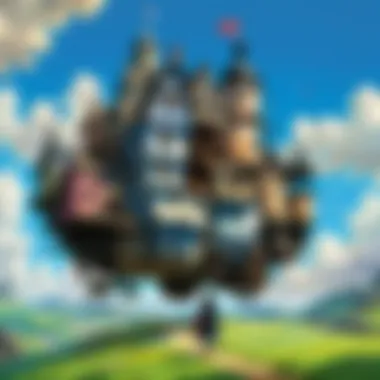
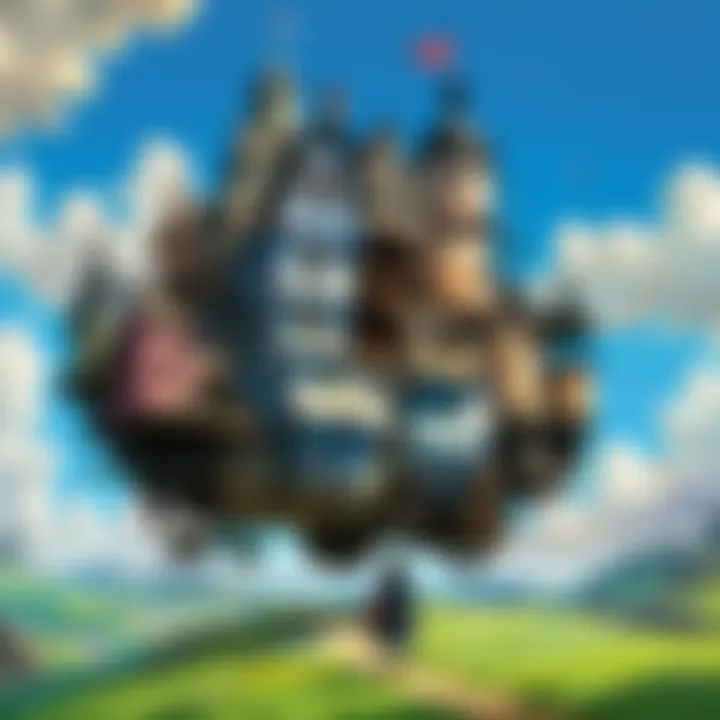
Brief Analysis of Source Material
Howl's Moving Castle draws its inspiration from Diana Wynne Jones's novel of the same name. Written in 1986, the book presents a fantastical world similar to that of the anime but diverges significantly in plot and character development. While the film focuses heavily on themes of love and identity, the book delves deeper into themes of family and the nature of magic.
The adaptation transformed certain characters, notably the Witch of the Waste, who takes on a more nuanced role in the movie, providing layers of complexity that may not be as evident in the original text. For instance, while both mediums explore simultaneous relationships, the film emphasizes emotional bonds over the novel's more complicated political settings.
In both iterations, a unique feature is the subtle commentary on war and its effects.
Ultimately, both the film and the source material present a rich narrative that resonates with audiences, proving to be timeless in their exploration of love, identity, and personal growth. Through this article, we shall navigate through these avenues, offering a lens on how Howl's Moving Castle continues to enchant and provoke thought among viewers and readers alike.
The Historical Context
Understanding the historical context surrounding Howl's Moving Castle enriches our appreciation of the animation's deep narrative and thematic resonance. The film not only captures fantastical elements but also mirrors significant social realities and sentiments of its time. Particularly, two pivotal themes emerge from this context: the echoes of World War II and the cultural idiosyncrasies reflective of Japan in the early 21st century. By delving into these aspects, viewers gain insight into how the film subtly critiques and comments on both historical events and contemporary society.
The Impacts of World War
The aftermath of World War II cast a long shadow over Japan, influencing art, literature, and cinema profoundly. Howl's Moving Castle is no exception. One of the overarching sentiments within the film is a critique of warfare and its devastating consequences. Through the lens of war, the narrative portrays not just external conflict but also the inner turmoil experienced by characters.
- Sophie’s Transformation: Transformed into an elderly woman by a curse, Sophie’s journey reflects the loss of innocence brought by war. She grapples with her new identity, mirroring how society struggles with the scars of conflict.
- Howl's Duality: Howl embodies the complexity of fighting against one's own nature, conflicted between heroism and pacifism. His character illustrates the moral ambiguities of war, as he attempts to protect both his heart and those he cares about.
In Miyazaki's stories, the subject of war is treated with a nuanced touch, recognizing its horrors while also expressing hope and resilience. The film challenges the glorification of war, instead painting a poignant picture of its toll on humanity.
Cultural Reflections in Japan
As Japan ventured into the 21st century, there was a budding desire to reassess its identity, particularly among the youth. Howl's Moving Castle, released in 2004, resonates deeply within this cultural milieu by emphasizing themes of personal growth and self-discovery.
The film can be seen as a response to:
- Consumerism: Characters like Calcifer represent a critique of how modern society prioritizes material gain over meaningful connections. This battle against superficiality echoes the concerns of a culture adapting to globalization.
- Environmental Awareness: Much like other works by Miyazaki, there’s an evident focus on nature and its preservation amidst human conflict and industrialization. The castle itself represents both creativity and the discord existing in the world, juxtaposing human ingenuity against environmental degradation.
"In the heart of Miyazaki's worlds, the natural and the magical coalesce, a response to contemporary struggles."
Through these reflections, Howl's Moving Castle transcends mere storytelling and turns into a vehicle for cultural introspection. It engages its audience with questions about vulnerability, identity, and the interconnectedness of society. Thus, the historical context not only provides a backdrop but also enriches the narrative, making it relevant and resonant even today.
Character Development
In any narrative, character development is where the beating heart of the story lies. It's through the evolution of characters that we witness the unfolding of themes and motifs that bind the narrative together. In Howl's Moving Castle, the deep connection between character arcs and the larger narrative promotes not just engagement but also introspection for the audience. Each central figure embodies various facets of the overarching themes, thus serving as both individual and collective reflections of human experiences. This analysis is crucial for understanding how such complex interactions and personal transformations manifest on-screen.
Sophie's Transformation
Sophie, a seemingly ordinary young woman, begins her journey with the constraints of her societal role weighing heavily on her shoulders. Living in a world where appearances often dictate one's fate, she feels confined, both literally and figuratively, by her duties at the hat shop. The spell that transforms her into an elderly woman becomes a pivotal moment, forcing her to reassess her identity and grapple with her true self.
This transformation symbolizes much more than aging; it serves as a metaphor for the loss of confidence and the transition from childhood naivety to adult wisdom. As she navigates the world in her new form, she learns to value her inner strength, discovering that beauty and worth are not defined by external appearances. In numerous scenes, her wisdom grows, and she becomes a beacon of emotional intelligence for others, including Howl. This shift from despair to empowerment is what elevates her character from a mere protagonist to a deeply relatable figure facing struggles that many can identify with.
Howl's Complexity
Howl Pendragon is quite the enigma with his flamboyant personality and whimsical tendencies. However, beneath this exterior lies a tormented soul caught in the throes of conflict — both personally and in the wider political landscape of war. His character serves as a powerful representation of the struggles faced by individuals during turbulent times. He embodies the conflict between personal desire and responsibility, as well as the fear of commitment, both to Sophie and to the cause of peace.
What stands out is his refusal to conform to societal expectations, opting instead for a free-spirited lifestyle that often retreats into escapism. Yet, as the war escalates, viewers witness Howl's deeper layers unfurl, revealing his vulnerability. This complex nature not only raises questions about how individuals cope with responsibility but also speaks to the essence of masculinity and emotional labor in dire circumstances. His journey underscores the idea that heroes are not always flawless; rather, they are shaped by their experiences, mistakes, and the circumstances they encounter.
Supporting Characters and Their Roles
Just as the sun needs a chorus of planets to shine brightly in the sky, Howl's Moving Castle thrives on its supporting cast, each adding remarkable depth and resonance to the overall story. Key figures include Calcifer, the fire demon, who, despite his fiery temperament, illustrates loyalty and sacrifice. His bond with Howl serves as an anchor for the narrative, showing how mutual dependence strengthens relationships, even under the weight of burdens that individuals carry.
Additionally, the Witch of the Waste stands as a multifaceted antagonist. Initially portrayed as a malevolent figure, she gradually reveals her vulnerabilities, creating a more nuanced understanding of conflict. Her character arc encourages viewers to examine the thin line between good and evil and to recognize the complexities that shape our actions.
Lastly, the charming presence of Markl, Howl's apprentice, adds a layer of youthful innocence. He becomes a crucial link for Sophie, symbolizing hope and continuity throughout the film. Each supporting character, while distinct in their motives and traits, interplays seamlessly to enrich the narrative tapestry, allowing the audience to explore broader themes of love, sacrifice, and identity.
The depth of character development in Howl's Moving Castle not only enhances the story but also serves as a mirror reflecting our real-life struggles and triumphs.
Visual and Artistic Elements
The visual and artistic elements in Howl's Moving Castle play a crucial role, acting as the backbone for the narrative's rich tapestry. It's not only about telling a story but also about evoking emotions and creating a world that feels both fantastical and relatable. By examining how various visual components harmonize with the themes of the film, we can appreciate the depth that makes it a landmark in animation.
Animation Techniques
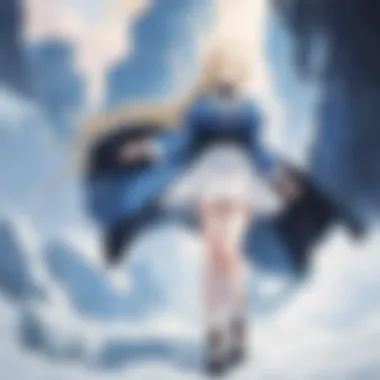

The animation techniques employed by Studio Ghibli in this film are nothing short of meticulous. Each frame feels like a piece of art, crafted with painstaking attention. Unlike many modern 3D animations, Howl's Moving Castle exudes a hand-drawn charm that resonates with viewers. This choice to maintain traditional 2D techniques demonstrates not just a stylistic preference but represents a philosophy about storytelling.
"Animation is not the art of drawings that move, but the art of movements that are drawn."
Consider scenes where the castle transforms and shifts; the fluidity presents an organic quality, making the castle feel alive. The melding of intricate backgrounds and exaggerated character movements captures the essence of the emotional complexity within the story.
Color Palette and Symbolism
Colors in Howl's Moving Castle do more than decorate the scenes; they speak volumes. The color palette is deliberately chosen to align with the film's emotional arcs. For instance, warm hues often surround Sophie, symbolizing her growth and inner warmth, while darker tones envelop Howl, hinting at his struggles with identity and war.
- Warm Colors: Used to convey comfort and love, these colors are prominent in scenes set in Sophie's world. They represent hope and resilience in tough times.
- Cool Colors: Like blues and greens, signify detachment and the fears of war, especially evident in Howl's more vulnerable moments.
By analyzing the color choices, one can witness how Miyazaki translates emotional landscapes into visual language, further enriching the viewer's journey through the narrative.
The Significance of the Moving Castle
The moving castle itself is a character in its own right. It embodies the themes of mobility and transformation, resonating with the journeys of Sophie and Howl. Built from disparate pieces, much like the personalities of its inhabitants, the castle becomes a metaphor for change and adaptation amidst chaos.
Its frequent relocations symbolize not just the physical journey but also the emotional one. Against the backdrop of an impending war, the castle becomes a haven, illustrating the idea that home isn't necessarily a place but rather where one finds comfort and belonging.
In essence, the castle is a reflection of the intertwining fates of its inhabitants, showcasing their collective struggles. It stands as a visual representation of the chaos and beauty of life, emphasizing that amidst the turmoil, there is always a possibility for growth, reflection, and change.
Themes and Philosophical Questions
In the tapestry of Howl's Moving Castle, themes and philosophical inquiries pulse at its core, generating a rich dialogue that resonates with viewers. Through love, sacrifice, war, and identity, the narrative encourages individuals to examine their own morals and choices within a complex, often harsh world. Each thematic thread is woven with care, inviting one to ponder not just the fantastical elements of the story but the societal implications that lie beneath. This section unpacks the layers residing within the motifs of love, the nature of conflict, and the journey toward self-discovery, highlighting how they contribute to the film's lasting significance.
Love and Sacrifice
At the heart of the narrative, love is portrayed not merely as an emotion, but a transformative force. It's the catalyst that drives characters to make heart-wrenching decisions, often at great personal risk. Sophie’s love for Howl emerges as a beacon, illuminating the way through her trials and tribulations. In many respects, her journey embodies the notion that true love often demands sacrifice. It's love that fosters growth as Sophie evolves from a timid girl into a strong, resilient woman willing to face adversities head-on.
Consider also Howl’s character; he grapples with his own demons, using his powers to dodge responsibilities. His eventual willingness to confront his fears and protect those he loves illustrates the idea that love can lead individuals to rise above themselves. The film serves as a poignant reminder that the depth of one’s affection often defines the choices they make, solidifying the belief that love is an exchange where sacrifice isn't just common; it’s necessary.
The Conception of War
War serves as a backdrop throughout Howl's Moving Castle, shaping the characters' realities and igniting crucial debates about dominance and devastation. The portrayal of war in the film is not glorified; rather, it exposes its grimness and the chaos it brings. Through the lens of Sophie and Howl, one gains insight into how such strife unravels lives, leading to destruction and loss.
In the narrative, Howl's tendency to shy away from conflict symbolizes a broader commentary on the avoidance of war. The fear of personal involvement highlights how individuals often grapple with the impact of societal conflict, sometimes opting for perceived safety over active engagement. The film raises important questions: Can one remain uninvolved and still honor the consequences of war? What does it really mean to be courageous in a world marred by violence?
“To be a hero is to be engaged, despite the chaos that surrounds.”
This quote resonates deeply within the framework of the film, suggesting that true heroism requires both awareness and action against oppression.
Identity and Self-Discovery
The theme of identity reshapes itself as characters embark on their journeys of self-discovery. Sophie, cursed to live in an elderly body, symbolizes the exploration of one’s true self, revealing how external perceptions can blur one’s understanding of identity. Initially bound by societal expectations, she grapples with feelings of inadequacy, only to find strength when stripped of her youthful facade.
Howl, on the other hand, oscillates between various identities. His ability to metamorphose allows him to escape his reality, portraying the conflict between one’s true self and the roles society imposes. As the narrative unfolds, both characters emerge more attuned to their authentic selves. This evolution exemplifies that self-discovery often requires peeling back the layers imposed by others, suggesting that one's journey can be an exploration of both personal and shared identity.
Musical Composition
Musical composition in Howl's Moving Castle plays a fundamental role, weaving through the narrative and enhancing the emotional depth of the story. The film’s score is not merely a backdrop; it’s a critical element that drives the plot and shapes the viewer's experience. Through its melodies and orchestration, the music defines the atmosphere of each scene, amplifying feelings of whimsy, longing, or tension. By marrying sound with visuals, the score invites audiences to connect deeply with the characters and their journeys.
Joe Hisaishi's Score
Joe Hisaishi's musical score for Howl's Moving Castle stands as a testament to his brilliant ability to create a soundscape that resonates with both the film's visuals and its themes. Hisaishi employs a blend of orchestral elements, combining strings, woodwinds, and brass to craft a rich auditory experience. Each motif feels carefully tailored to the mood of the moment, be it the light-hearted scenes where Sophie discovers her new world, or the somber reflections on war and transformation.
In contrast to the visual grandeur, his compositions often evoke a sense of intimacy. Take, for instance, "The Merry-Go-Round of Life," which captures the essence of time passing and transformations, both in setting and in character. It’s a melody that lingers in the mind long after the film ends, echoing the film's themes of love and identity. Hisaishi's knack for creating delicate, airy pieces that drift along sweetly juxtaposes with more powerful, emotional crescendos. This careful weaving of sounds allows the audience to journey alongside the characters.
Music as a Narrative Device
Music in Howl's Moving Castle serves as more than just an accompaniment; it acts as a narrative device that enriches storytelling. Throughout the film, music signals changes in tone, indicates character development, and foreshadows events. When Sophie first encounters Howl, a whimsical theme bubbles up, hinting at the enchanting yet chaotic nature of their relationship.
Moreover, Hisaishi’s score often reflects Sophie's internal conflicts and growth. As her character transforms, so too does the music—shifting from soft, hesitant notes that represent her insecurity to strong, bold harmonics as she comes into her own. These nuanced shifts play a crucial role in emphasizing pivotal moments in the narrative.
Just as visuals can evoke emotions, the music conveys underlying truths about the characters' struggles, desires, and relationships. It intertwines with the dialogue and action, complementing rather than overshadowing, resulting in a rich tapestry of sound that leaves an indelible mark on the audience.
"Music is the shorthand of emotion." - Leo Tolstoy


In summary, Joe Hisaishi’s score is not just a collection of notes; it is the heartbeat of Howl's Moving Castle. Each piece elevates the storytelling by deepening emotional resonance and inviting audiences into the dynamic world Miyazaki has created. As we explore the intersection of sound and narrative, we uncover how vital musical composition is in enhancing our connection to this enduring tale.
Reception and Impact
The reception and impact of Howl's Moving Castle is a linchpin in understanding its legendary status within the landscape of animation. This section highlights how the film has attracted widespread acclaim, as well as its broader cultural ramifications. As one delves deeper into this portion of the analysis, the significance becomes clear: the interplay between artistic innovation and audience response has catalyzed the film's endurance in popular culture.
Critical Acclaim
Howl's Moving Castle did not just step onto the stage; it waltzed in, garnering critical acclaim from the get-go. It received the prestigious Oscar for Best Animated Feature, which served not just as a feather in its cap but also as a recognition of Hayao Miyazaki's remarkable storytelling prowess. Critics lauded the film for its rich animation and complex characters, transforming what could have been a simple fantasy tale into a multilayered narrative.
Prominent film critics praised its intricate visual storytelling, calling it a masterpiece of aesthetic and thematic resonance. The mixture of whimsy and gravity struck a chord, appealing to both younger audiences and adults, which is quite the juggling act in animation. Many noted the film's ability to evoke deep emotions, often citing particular scenes that seemed almost poetic.
"Miyazaki crafts a world that reminds us of the delicate juxtaposition of peace and war, love and loss."
— Anonymous Critic
Some notable reviews hailed it as a triumph of animation, stating that it established new benchmarks for the genre. Roger Ebert went as far as to position it among the top animated films of all time, further cementing its legacy. Enthusiasts have taken to forums such as Reddit to express their admiration, indicating how prodigious the influence of the film has buoyed fandom.
Cultural Significance
Transitioning from critical acclaim to its cultural significance, Howl's Moving Castle serves as more than entertainment; it acts as a lamp lighting the way through important dialogues around war, identity, and emotional transformation. Embedded in a backdrop of historical contextuality, the film reflects on themes that resonate universally, thus capturing the hearts of diverse audiences.
In Japan, this film marked a distinctive stride in the acceptance of animation as a serious art form. It shifted the conversation from cartoons orientated towards children to a medium capable of deep philosophical inquiry. This exemplifies how animation can address profound themes, blurring the lines between different genres and expectations.
The cultural impact stretches beyond its native Japan; globally, the film has inspired countless adaptations, merchandise, and academic discussions. Fans find themselves drawn to Howl and Sophie’s complex relationship, a mirror to the myriad ways love and conflict interlace in real life. This magnetic pull towards its themes has sparked discussions in various platforms and forums, enriching its legacy further.
The film’s influence is visible in countless other works that pay homage to Miyazaki’s unique touch. Animation schools worldwide study Howl's Moving Castle to unravel the magic behind its world-building and character creation. Its ability to engage with audiences of all ages keeps it in a discourse that is as vibrant today as it was at the time of its release.As art continues to evolve, Howl's Moving Castle stands as a testament to the power of animation to spark both critical thought and emotional breadth.
Legacy of Howl's Moving Castle
The legacy of Howl's Moving Castle extends far beyond its remarkable narrative and stunning animation. This film, a creation of Hayao Miyazaki, serves as a testament to the artistic, cultural, and philosophical contributions that resonate to this day. At its core, the legacy pivots around the influence it has had on the animation industry and the broader cultural dialogues it has ignited.
Influence on Animation
The animation landscape has been richly colored by the brushstrokes of Howl's Moving Castle. With its unique blend of enchanting storytelling and visually captivating aesthetics, it pushed boundaries and redefined what animated films could achieve. Miyazaki's dedication to intricate hand-drawn techniques in an era where digital animation was rapidly becoming the norm has left an indelible mark on both audiences and animators alike.
Moreover, its success encouraged a wave of other creators to adopt similar artistic philosophies, focusing less on advanced technology and more on rich character development and emotional depth. Here are a few influences Howl's Moving Castle has imparted on animation:
- Artistic Techniques: The film's detailed backgrounds and elaborate character designs emphasize layers of creativity, encouraging animators to push visual storytelling further.
- Narrative Complexity: The intertwining of magical realism with genuine, human emotion has inspired storytellers to delve deeper into the richness of character arcs.
- Cultural Shifts: It aids in broadening the potential subjects of animated filmmaking, validating stories that touch on war, identity, and transformation, thereby opening doors for diverse narratives in animation.
As a result, the film is not only a beloved classic but also a blueprint that animators and writers look towards as they craft their own unique tales.
Adaptations and Expansions
The enduring charm of Howl's Moving Castle is reflected in the numerous adaptations and expansions it has inspired. While the original novel by Diana Wynne Jones stands as a significant work in its own right, the film by Miyazaki has invigorated the narrative with its own distinct flair. This fusion of media highlights how stories can evolve and adapt across formats.
Several noteworthy adaptations and expansions have emerged since the film’s release:
- Theatrical Performances: Various stage adaptations have taken the essence of the story and transformed it into live performances, capturing the magical narrative in a new light.
- Mercis' New Projects: The company has announced future adaptations that draw on the themes pioneered in Howl's Moving Castle, indicating the film's lasting impact on storytelling.
- Fan Creations: The fandom surrounding Howl's Moving Castle has birthed countless fan art pieces and stories, showcasing the vibrant community that reveres this classic. These creations often inject new perspectives and interpretations, proving that the narrative continually inspires individuals to contribute their own artistry.
As these adaptations flourish, they weave together a rich tapestry, showcasing how Howl's Moving Castle has become a pivotal part of international cultural discourse.
"Howl's Moving Castle isn't just a film; it's a journey through emotional landscapes that continues through various forms of artistic expression."
In summation, the legacy of Howl's Moving Castle is a multifaceted phenomenon that has influenced animation, inspired adaptations, and sparked cultural conversations. Through its artistic bravura and profound themes, it solidifies its place not just as an iconic film but as a landmark in cinematic history.
Finale
Howl's Moving Castle stands as a monumental piece not only in animation, but in storytelling. The film's nuanced layers invite viewers to reflect on a variety of themes that resonate deeply with human experience. This article has explored key elements like character evolution, artistic choices, and the dense tapestry of themes interwoven throughout the narrative. Understanding these components enriches our appreciation for not just the film, but the philosophy embedded within.
Reflecting on Howl's Moving Castle
When we take a moment to reflect on Howl's Moving Castle, the intricate narrative truly comes into focus. The film mirrors the tumult of personal and societal change through the lens of Sophie's and Howl's journeys. Sophie's transformation from a meek hat maker to a confident force embodies the idea that growth often arises through adversity.
Additionally, Howl's character, with all his flaws, showcases the imperfections that make us human. His struggles with commitment and identity are poignant reminders that everyone grapples with their own battles. The interplay between these characters gives depth to the film’s message – that love, while often messy and complicated, is profoundly transformative.
The Enduring Appeal of Miyazaki's Work
Miyazaki's genius lies in his ability to create worlds that captivate audiences of all ages. The enchanting realms, detailed characters, and philosophical undertones in Howl’s Moving Castle are part of what keeps viewers returning time and again. Unlike many animated films that rely heavily on humor or straightforward narratives, Miyazaki crafts a rich tapestry that encourages contemplation.
His works often reflect broader societal issues, aesthetics, and ethical dilemmas. This creates a connection to real-world experiences that resonates even decades after their release. As new generations discover this masterpiece, Miyazaki's themes of resilience, ecological consciousness, and anti-war sentiments continue to hold immense relevance.
Howl's Moving Castle serves as a powerful reminder that storytelling can transcend the screen, offering lessons that extend into our own lives. Through its complex characters and vivid storytelling, it invites us to ponder our own journeys of transformation and self-discovery.







